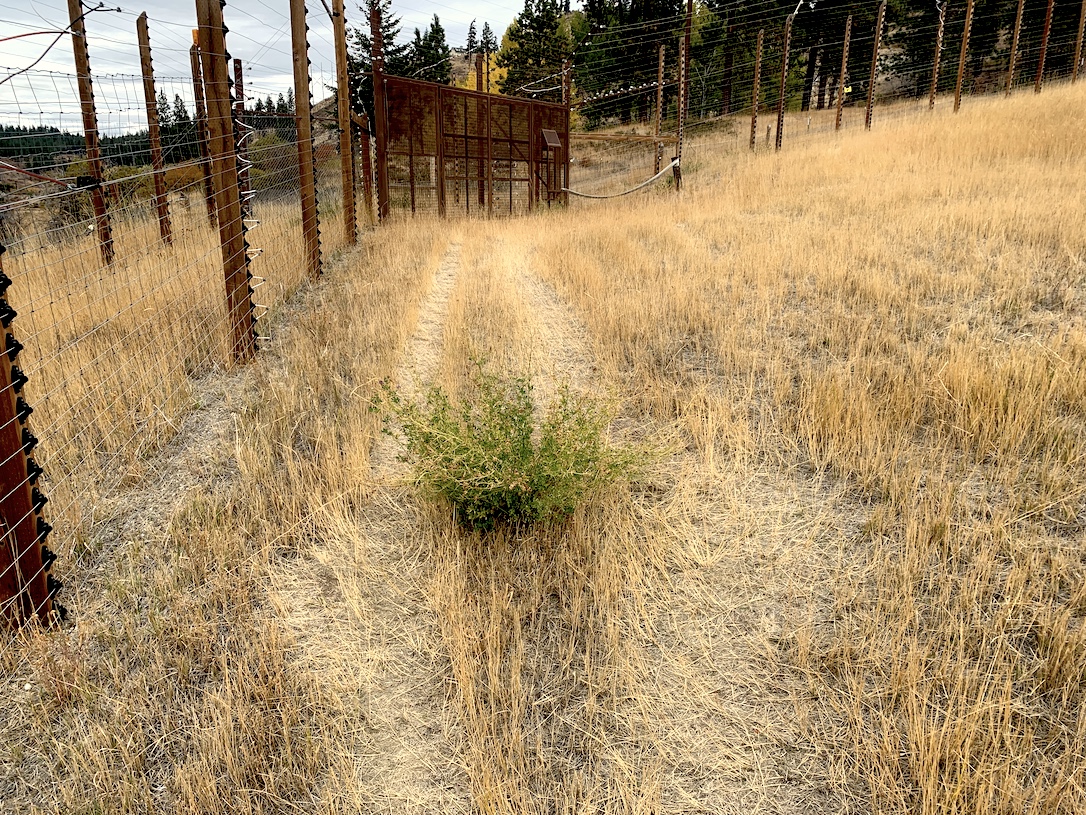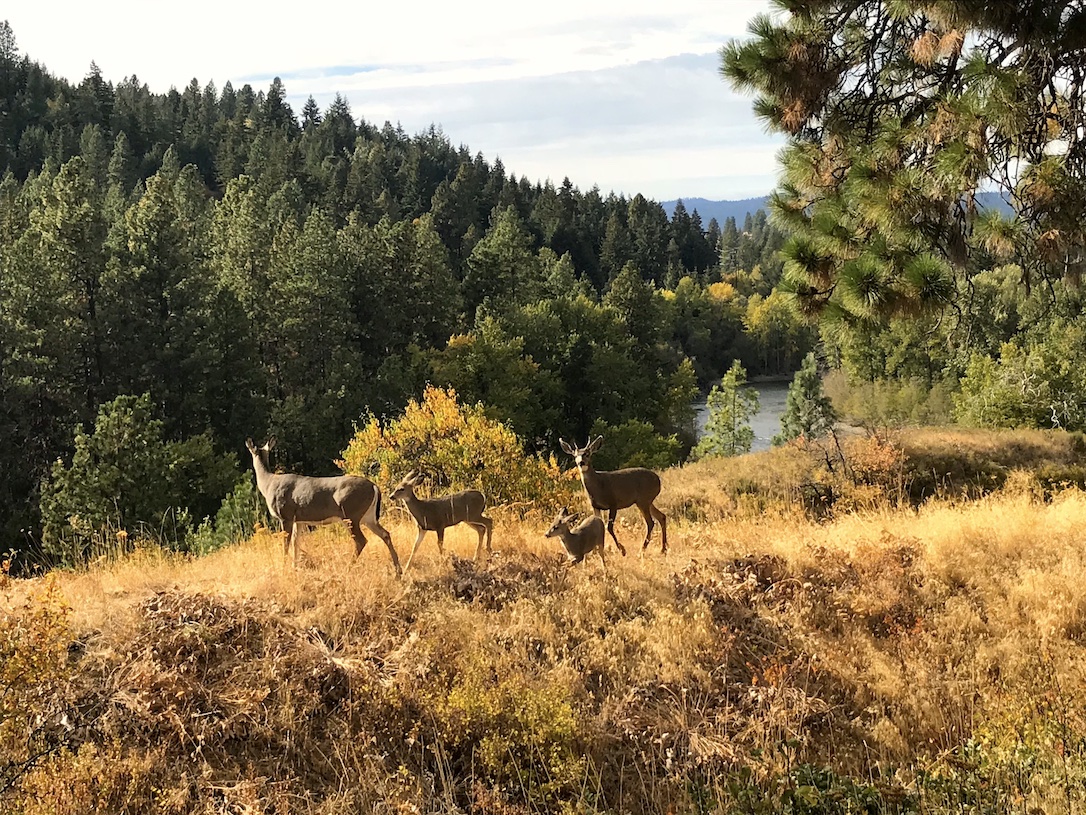Young’s Hill is not a very densely vegetated enclosure. Nevertheless, the chimps have developed a network of trails throughout its two acres.
You’d hardly think it necessary in such a wide open space. Perhaps it’s the dampness of the grass in spring or the potential dangers that lurk beneath in late summer. Leaving the trail often means walking bipedally, which is not a comfortable mode of long-distance travel for chimpanzees.
Most of the trails are single tracks, which is partly why you often see the chimps traveling in a long line.
Every once and a while, a trail veers around an “obstacle” such as this alfalfa plant, which had the gall to establish itself along one of the chimps well-traveled routes. In this case, the chimps follow two different detours. I can almost guarantee you that while some chimps go left and others go right, each individual chooses the same left or right detour every time. Creatures of habit, these chimps.
Jamie follows the trails religiously. In fact, she probably established most of the trails long ago through her disciplined daily patrols.
The chimps aren’t the only ones who prefer a well worn path. We humans do, obviously, but so do cows. This trail winds down a slope from just above Young’s Hill and the cows rarely stray from it when crossing between pastures. Switchbacks like this do serve a purpose, in that they reduce a trail’s grade. I often wonder if this particular squiggle was the most efficient way down the slope or if it began somewhat randomly and took on a life of its own.
The deer have created their own network of trails throughout the sanctuary’s 90 acres. One of their paths follows an old irrigation canal along the sanctuary’s western boundary.
Our dogs also like to follow these paths. It could be due to the scents left behind by the deer, but I think there’s more to it than that.
These trails begin for practical reasons – they are safer and less strenuous routes for cows traversing a slope, shortcuts for deer when leaving the relative safety of the woods to feast on pears from the sanctuary’s orchard, and territorial boundaries for chimpanzees. But eventually the trails themselves become the reason for traveling the route. They practically beg to be followed. Robert Frost notwithstanding, we tend to take the road more traveled.













